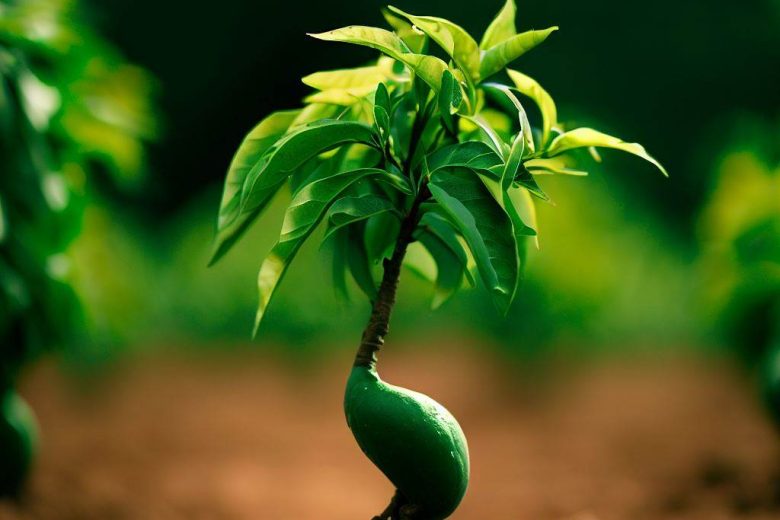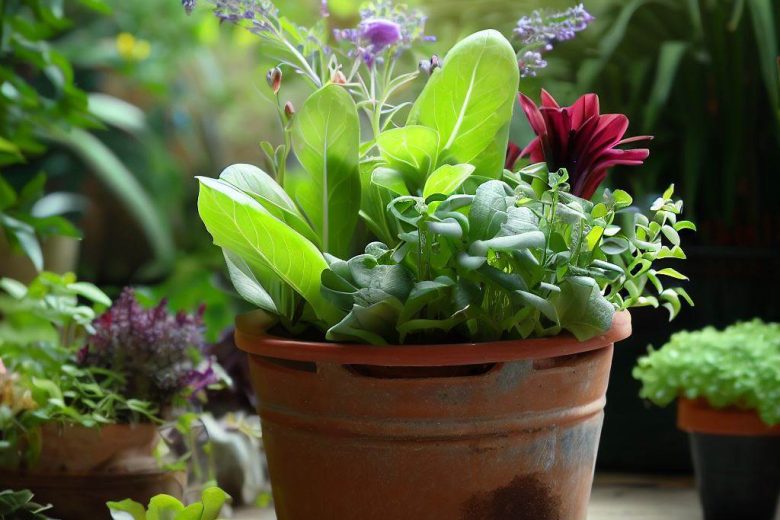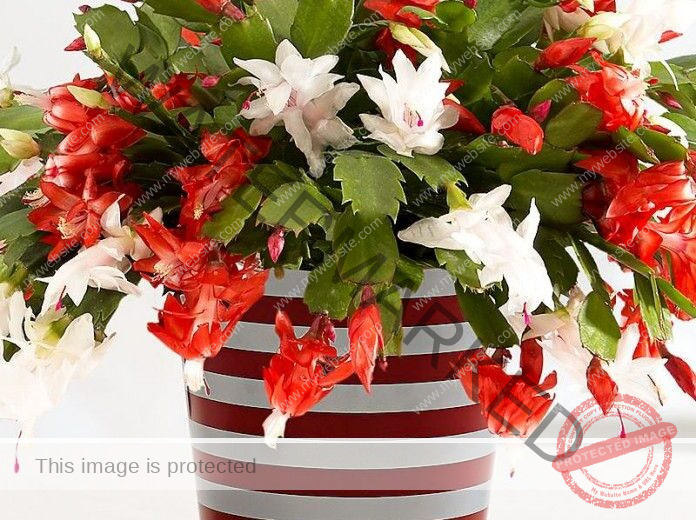Imagine stepping into your garden and being greeted by the lush foliage and sweet aroma of your very own fruit trees. In Zone 7, characterized by its moderate climate and well-defined seasons, you have the perfect canvas to cultivate a variety of fast-growing fruit trees. From the crisp bite of apples to the juicy explosion of peaches, these trees can flourish and yield bountiful harvests in this region.
In Zone 7, a temperate climate provides an ideal setting for fast-growing fruit trees. From apples to peaches, cherries to figs, this diverse list of 20 fruit trees ensures abundant harvests. These trees thrive in the balanced seasons of Zone 7, offering delicious flavors, vibrant colors, and opportunities for gardeners to create fruitful orchards in their own backyards.
20 Fastest Growing Fruit Trees Zone 7
1. Granny Smith Apple
The Granny Smith Apple tree is renowned for its vibrant green apples that offer a tantalizing tartness. These apples are excellent for snacking and baking, adding a zing to your pies and salads.
Read Also: 20 Fast Growing Fruit Trees Zone 8
2. Fuji Apple
If you crave sweetness, the Fuji Apple tree delivers. Its large, crisp apples have a perfect blend of sweet and tart flavors. They store well too, making them a fantastic choice for enjoying your harvest over time.
3. Golden Delicious Apple
Just as the name suggests, the Golden Delicious Apple tree produces beautiful, golden-yellow fruit. These apples are known for their mellow sweetness and are incredibly versatile in the kitchen.
Read Also: 30 Fast Growing Vegetables in Winter
4. Bartlett Pear
The Bartlett Pear tree is a favorite due to its delectably juicy and buttery fruit. It’s a self-pollinating tree that consistently yields a bounty of pears, perfect for canning and enjoying fresh.
5. Anjou Pear
Anjou Pear trees offer a unique treat with their slightly grainy texture and subtly sweet flavor. They come in both green and red varieties, adding visual appeal to your garden.
6. Asian Pear
Asian Pear trees bring a crispy, apple-like texture to the pear experience. With flavors ranging from sweet to tangy, these pears are a delightful addition to salads and cheese plates.
Read Also: 20 Fast Growing Fruit Trees Zone 6
7. Georgia Belle Peach
The Georgia Belle Peach tree is prized for its juicy, aromatic peaches. With a low chilling hour requirement, it’s well-suited for Zone 7. The peaches are perfect for fresh eating and making preserves.
8. Elberta Peach
The Elberta Peach tree boasts large, golden peaches that are both sweet and slightly tangy. These peaches are wonderful for enjoying fresh, freezing, or canning.
9. Hale Haven Peach
Hale Haven Peach trees are known for their large, blush-red peaches. The fruit has a melting texture and a rich, classic peachy flavor, making it a true summer delight.
Read Also: 25 Fast-Growing Fruit Trees Zone 1
10. Stella Cherry
The Stella Cherry tree is a self-pollinating variety that produces beautiful dark red cherries. Known for its resistance to cracking, it ensures a successful harvest of these succulent fruits.
11. Bing Cherry
Bing Cherry trees are famous for their plump, glossy, deep red cherries. Their firm texture and sweet flavor make them a popular choice for both snacking and baking.
12. Rainier Cherry
Rainier Cherry trees offer a unique twist with their yellow to pink-blushed cherries. These cherries are exceptionally sweet and lend themselves well to fresh eating.
Read Also: 30 Fast Growing Tropical Fruit Trees
13. Moorpark Apricot
The Moorpark Apricot tree is a classic choice, bearing medium to large apricots with a rich, tangy-sweet flavor. These apricots are wonderful for enjoying fresh or drying.
14. Harglow Apricot
Harglow Apricot trees produce medium-sized, juicy fruit with a balanced flavor. They are highly productive and disease-resistant, ensuring a consistent harvest.
15. Goldcot Apricot
The Goldcot Apricot tree offers early ripening and delicious apricots with a golden-orange hue. Their flesh is sweet and succulent, perfect for eating fresh or making jams.
16. Methley Plum
The Methley Plum tree is a fast-grower that bears reddish-purple plums. With a sweet and mildly tart flavor, these plums are excellent for fresh eating, baking, and canning.
17. Stanley Plum
Stanley Plum trees produce a bounty of dark purple plums famous for their use in prunes. The plums have a sweet-tart taste and are superb for cooking, drying, or enjoying fresh.
18. Moyer Plum
Moyer Plum trees offer large, red-skinned plums with sweet, juicy flesh. These plums are ideal for making jams, jellies, and desserts.
19. Brown Turkey Fig
Brown Turkey Fig trees are a marvel, producing medium to large figs with a purplish-brown skin and sweet, rich pink flesh. They are perfect for fresh eating and making preserves.
20. Celeste Fig
Celeste Fig trees offer small to medium-sized figs with a violet-brown skin and a honey-like flavor. These figs are excellent for enjoying fresh or drying.
21. Chicago Hardy Fig
Chicago Hardy Fig trees are incredibly resilient, withstanding colder temperatures. The medium-sized, light brown figs they bear are sweet and succulent.
22. Illinois Everbearing Mulberry
The Illinois Everbearing Mulberry tree lives up to its name, producing a continuous supply of sweet, dark purple mulberries. These berries are perfect for snacking, making jams, or baking.
23. Pakistan Mulberry
Pakistan Mulberry trees yield impressively large, sweet berries. Their unique flavor profile sets them apart, making them a delightful addition to your home orchard.
24. Dwarf Mulberry
Dwarf Mulberry trees are ideal for smaller spaces. Despite their size, they produce an abundance of juicy, dark-colored mulberries that are perfect for fresh consumption.
25. Fuyu Persimmon
The Fuyu Persimmon tree produces flattened, tomato-shaped persimmons that are sweet and crisp when ripe. These persimmons are a delicious treat to enjoy fresh.
26. Hachiya Persimmon
Hachiya Persimmon trees bear heart-shaped fruit with a vibrant orange hue. They are best enjoyed when fully ripe, as their astringency gives way to a sweet, custard-like texture.
27. Tamopan Persimmon
The Tamopan Persimmon tree produces medium to large fruit with a deep orange color. These persimmons have a rich, spicy-sweet flavor that’s perfect for snacking and cooking.
28. Sunraycer Nectarine
The Sunraycer Nectarine tree boasts medium to large nectarines with a red-blushed skin. Their sweet and tangy flavor profile makes them a wonderful choice for eating fresh.
29. Red Gold Nectarine
Red Gold Nectarine trees produce nectarines with a striking red and gold skin. The fruit inside is yellow and incredibly juicy, offering a delightful burst of flavor.
30. Fantasia Nectarine
Fantasia Nectarine trees bear large, yellow-fleshed nectarines. Known for their delectable sweetness, these nectarines are perfect for both snacking and using in various culinary creations.
31. Arbequina Olive
The Arbequina Olive tree is prized for its small, flavorful olives that yield a high-quality oil. These trees are relatively compact, making them suitable for smaller landscapes.
32. Mission Olive
Mission Olive trees are known for their rich history and dark purple-black olives. The olives are often cured and enjoyed as table olives or pressed into oil.
33. Manzanillo Olive
Manzanillo Olive trees produce large, green olives with a slightly nutty flavor. They are excellent for both curing and pressing into oil.
35. Wonderful Pomegranate
The Wonderful Pomegranate tree lives up to its name with its deep red fruit full of juicy, ruby-red arils. These pomegranates are a treasure trove of antioxidants and delectable taste.
36. Haku Botan Pomegranate
Haku Botan Pomegranate trees offer a unique blend of sweet and tart flavors in their light pink to deep red fruit. These pomegranates are perfect for fresh eating and juicing.
37. Ambrosia Pomegranate
Ambrosia Pomegranate trees produce sweet and tangy pomegranates with pale pink skin and a high juice content. They are a delightful addition to your home orchard.
What Fruit Grows Best in Zone 7?
In Zone 7, a variety of fruits thrive due to its balanced climate. Apples, pears, peaches, and cherries are popular choices for their adaptability and flavorful yields. Additionally, figs, persimmons, and pomegranates flourish, offering unique tastes and adding diversity to the garden. The key is to select fruit tree varieties that are well-suited to Zone 7’s moderate winters and warm summers, ensuring a fruitful and enjoyable garden experience.
Why Zone 7 is Ideal for Fruit Trees
Zone 7 enjoys a temperate climate that strikes a balance between the cold of winter and the heat of summer. This makes it conducive for a diverse range of fruit trees to thrive. The chilling winter period satisfies the dormant requirements of many fruit trees, while the warm summers provide the necessary heat for fruit ripening. Now, let’s dive into some of the most delightful fruit trees you can grow in Zone 7.
Can I grow these trees in containers?
Absolutely! Many of these fruit trees can be grown in containers, which is ideal for those with limited space.
What is the best time to plant these fruit trees?
Fall or early spring is the ideal time to plant fruit trees in Zone 7, allowing them to establish their roots before the heat of summer or the cold of winter.
How often should I fertilize these trees?
Fertilize your fruit trees annually in early spring with a balanced, slow-release fertilizer to support healthy growth and fruit production.
Are these trees resistant to common pests?
While some of these trees have natural pest resistance, it’s still advisable to monitor your trees regularly for signs of pests and take appropriate measures.
Where can I purchase these fruit trees?
You can find these fruit trees at local nurseries, garden centers, or reputable online retailers specializing in fruit-bearing plants.
Conclusion
Incorporating fast-growing fruit trees into your Zone 7 garden is an exciting journey that promises delicious rewards. Whether you’re passionate about apples, peaches, cherries, or pomegranates, there’s a tree on this list that’s bound to capture your gardening heart. Embrace the joy of nurturing these trees, and soon enough, you’ll be savoring the delectable fruits of your labor.
Now that you’re armed with the knowledge of these wonderful fruit trees, why wait? Begin your orchard adventure today and enjoy the sweet success that comes from growing your own fruit in Zone 7.




